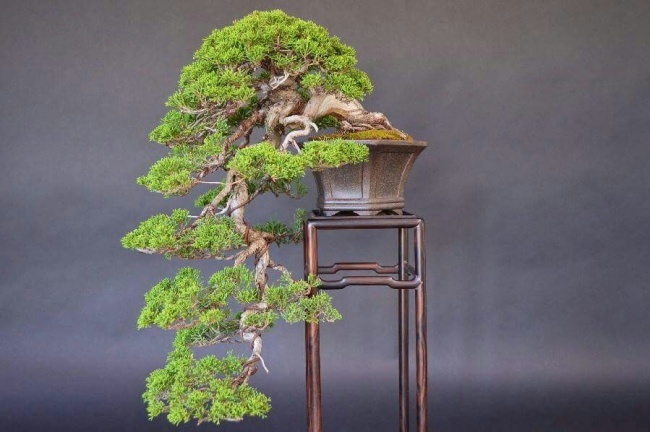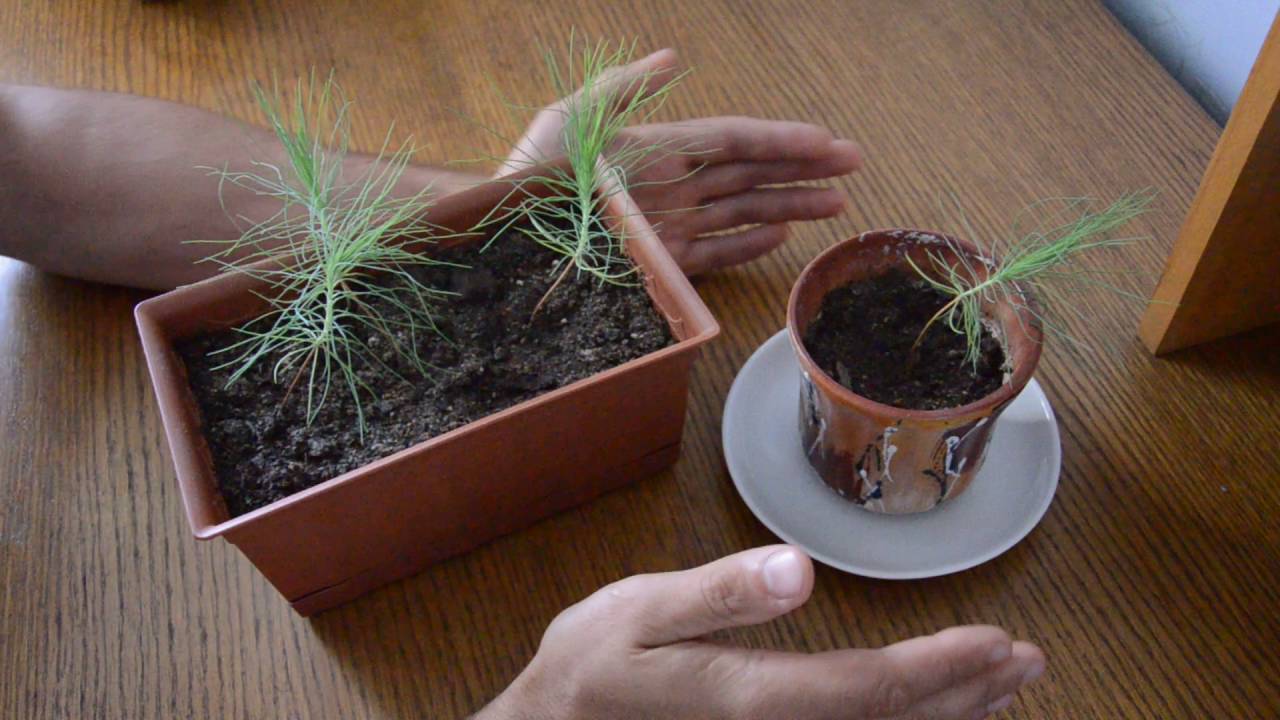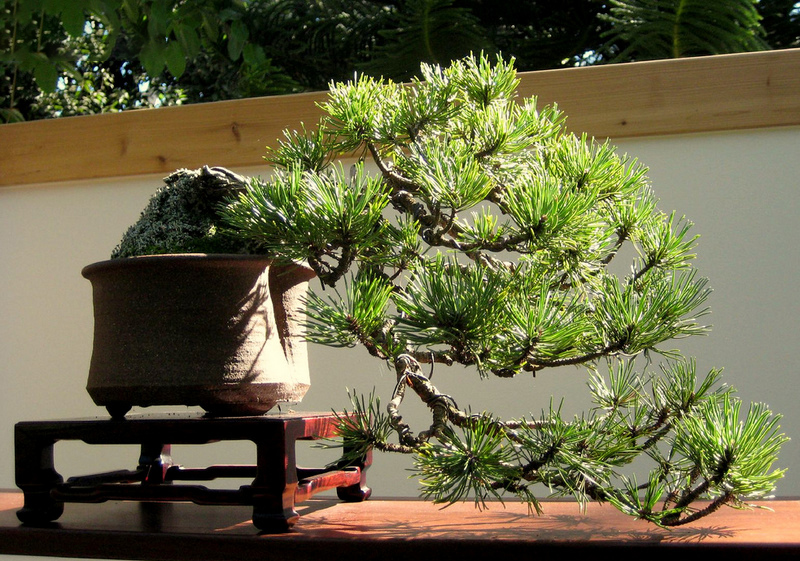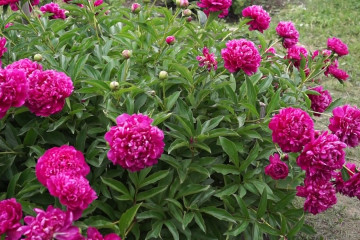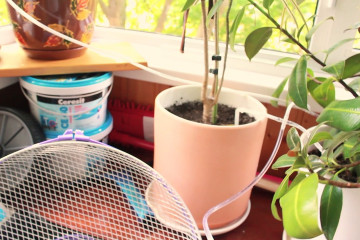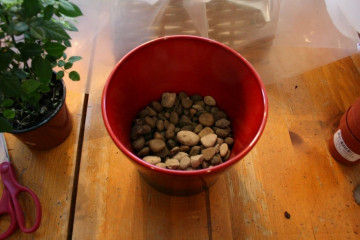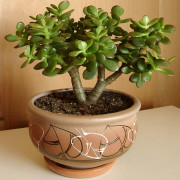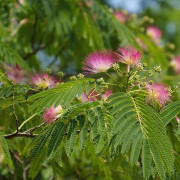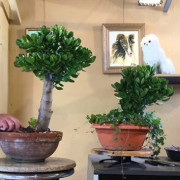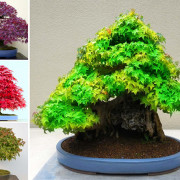DIY pine bonsai in the garden
Content:
Bonsai is the art of growing smaller copies of trees. It developed in Japan many centuries ago. How to make bonsai from pine at home is a subject of interest for flower growers and indoor plant lovers.
Description and main types
There are 4 popular types of bonsai:
- Japanese black. It grows slowly, but takes root well in temperate latitudes.
- Japanese white. It has white needles and a dense top.
- Mountain pine (mugus). It grows quickly, which greatly speeds up the process.
- Pine ordinary is unpretentious, pliable and takes the required shape with pleasure.
Bonsai pine-styles
Form is an integral part of the style. The intricate shape of the trunk and the exotic growth of the branches define the different styles of bonsai:
- Tekkan. Smooth trunk, with the upper arrangement of branches at the top. Has a basic shape.
- Moegi. The barrel has a curved shape.
- Sokan. From 1 root 2 trees.
- Shakan. A tilted trunk, as if torn from the soil by a gust of wind.
- Kengai. Arrangement of branches on a bent trunk in a cascading format. The capacity must be high because the top of the pine bends below the bottom.
- Khan Kengai. The crown is bent to the level of the pot. For the stability of the structure, the upper branches are redirected in the opposite direction.
- Bundzings. Slightly curved trunk with few branches. A prerequisite is the fact that the tip of a young shoot grows on an old tree trunk.
- Sekijou. The root is located on the stone.
- Ishitsuki. Grows on stone.
- Hokidachi. The crown is like a ball with a single barrel. The shape is like a fan. Branches and roots spread out evenly on all sides of the horizon.
- Yese Ue. Group of trees. You need to take an odd amount.
- Ikadabuki. It looks like a fallen tree.
- Bancan. At the very bottom, the trunk is twisted into a knot.
- Sharimiki. The barrel seemed to have been pierced by lightning and burned. Part of the tree remains dead, but lives off the living half.
- Neagari. The tree stands on the roots, which is why it has a decorative look. Requires a minimum amount of soil.
Planting and growing conditions
Troubled occupation, but worth it. The process is approached in stages:
- First you need to get some seeds. Gather ripe pine cones and place them in a warm, dry place to open. Next, seeds are extracted from the scales. The buds are no more than one year old, otherwise the seeds may not germinate.
- At the next stage, the seeds are exposed to low temperatures (up to +4 ℃). Under these conditions, the shell softens and the embryo is more easily born.
- Sowing seeds is done in February or March. It is at this time that they awaken and are ready to grow.
- A layer of gravel is placed on the bottom of a small pot, and the top is covered with ordinary sand. They must be pre-calcined in order to prevent the death of the seedlings.
- A groove with a depth of 2 cm is made in the container, and prepared seeds are placed in it with a frequency of 3 cm. Then they are covered with calcined river sand, watered and covered with glass. Airing must be done every day.
- Shoots appear in about two weeks. After that, the glass is removed and the containers are placed on the sunny side. Plants should not be allowed to stretch out.If there is not enough light, add backlighting.
- Root picking is done at the age of one month. The plants are carefully removed from the soil and the parts of the root that are not green are cut off. This is how the radial root is formed.
- Root formation. After that, for 15 hours the cuttings are placed in the preparation for the formation of roots. In the meantime, they prepare pots with a soil mixture, which consists of garden soil and river sand in half. Ready seedlings are planted in pots and placed in a shaded place for rooting for a month and a half.
- Landing in the main seat. After rooting, the trees are planted once more in a wide container 14 cm high. The roots are placed horizontally. The pots are returned to the sun before budding. This will happen presumably in 4 months.
Care rules
Pine is not a house plant, so you need to try to create conditions close to natural ones. In winter, the plant is taken out to the balcony, and in summer it is sent outside.
For the full development of the plant, the following rules should be observed:
- Do not get carried away with frequent watering. In the summer, the plant is watered once a week, and in the winter you just need to make sure that the soil does not dry out. The plant is very fond of a shower, so it is advisable to spray a pine tree once a week.
- The plant is fed in March and September 3 times. Organic fertilizers: humus, compost. Mineral: nitrogenous and phosphoric.
- The tree needs to be replanted every 3 years. This is done with the onset of spring, when the plant wakes up and begins to actively grow. It must be carefully removed from the old pot and examined the roots. If they spin, then you need to straighten them. It is better to cut off old coarse roots. The container is taken a little more than the old one and is suitable in size for the tree. The plant is allowed to be transplanted outside for a while, after digging a hole and preparing the soil. They take new soil. Care remains the same.
Trimming and shaping
The formation of Scots pine in the bonsai style takes place in a special format. The tree has 3 growth zones: the top, the middle part and the branches at the bottom. In the upper part, the branches grow faster, and the slowest in the lower ones. Diy bonsai pine tree formation algorithm:
- Kidneys. With the onset of spring, buds begin to appear on the tree. Above, less developed kidneys are left, below - stronger ones.
- Candles. In the process of growth, the buds turn into candles that must be pruned. Shorter candles are left in the upper part, and longer ones in the lower part.
- Needles. To supply internal shoots with light from the sun, the tree needs to thin out the needles. This begins in the middle of summer and ends in the fall. The needles are plucked at the top on the densest branches. Then the lower branches will also be pubescent evenly. To make the tree look more decorative, the needles can simply be trimmed. With further growth, they will no longer be so long.
- Crown. By wrapping with wire, the upper branches and trunk can be given a complex shape. This procedure is carried out in the fall, when the growth of the tree slows down. Otherwise, the wire will grow into the branches and scars will remain on the tree.
Forming pine bonsai from seedlings
There is a faster way to get bonsai. Young pine is purchased from the nursery. Prepare the potting mix and suitable utensils for planting at home. Saplings are dug out of the forest. At first, the trees transplanted into pots live in the garden.They are covered with mulch in the fall. In spring, the shoots are shortened to 10 cm, as a result of which lateral shoots begin to grow actively, and the thickness of the trunk increases. When the tree takes root, they form a bizarre shape.
How to make bonsai from pine at their summer cottage
If the crown has become rare, then it must be formed. They leave only beautiful branches, and get rid of the rest. All actions are taken in the fall, and in the spring, when the buds begin to grow, they are pinched, leaving 1.5 cm. Simultaneously with the pinching, the branches are placed horizontally and fixed with wire.
The wire may not hold the coniferous branches. In these cases, stones are additionally suspended from the branches. This is the only way to securely fix the powerful branches in the desired position. Pines bend well.
Wire removal
Usually, one season is enough to fix the branches in the desired position. When cutting the wire into the bark, it is removed earlier, even if the branches have not yet formed. After a while, you can impose new turns in the intervals of the scars and try again.
Then just grab a bite with a pair of wire cutters and unwind gently.
Waste-free production
When growing bonsai pine, every year you have to form a crown by cutting off the growing shoots. If there is no desire to throw away the twigs and want to increase the number of plants, they are used as planting material. One has only to root young cuttings and it will be possible to make new dwarf trees from them. In this case, production becomes waste-free.
A formed plant requires close attention and proper care. Growing it is a painstaking process of pruning branches, plucking needles and trimming. Not to mention maintaining humidity, fertilizing and maintaining temperature. Fulfillment of all these conditions will lead to the desired result, and the tree will delight for many years.
